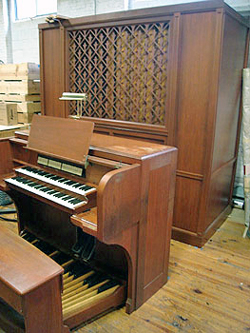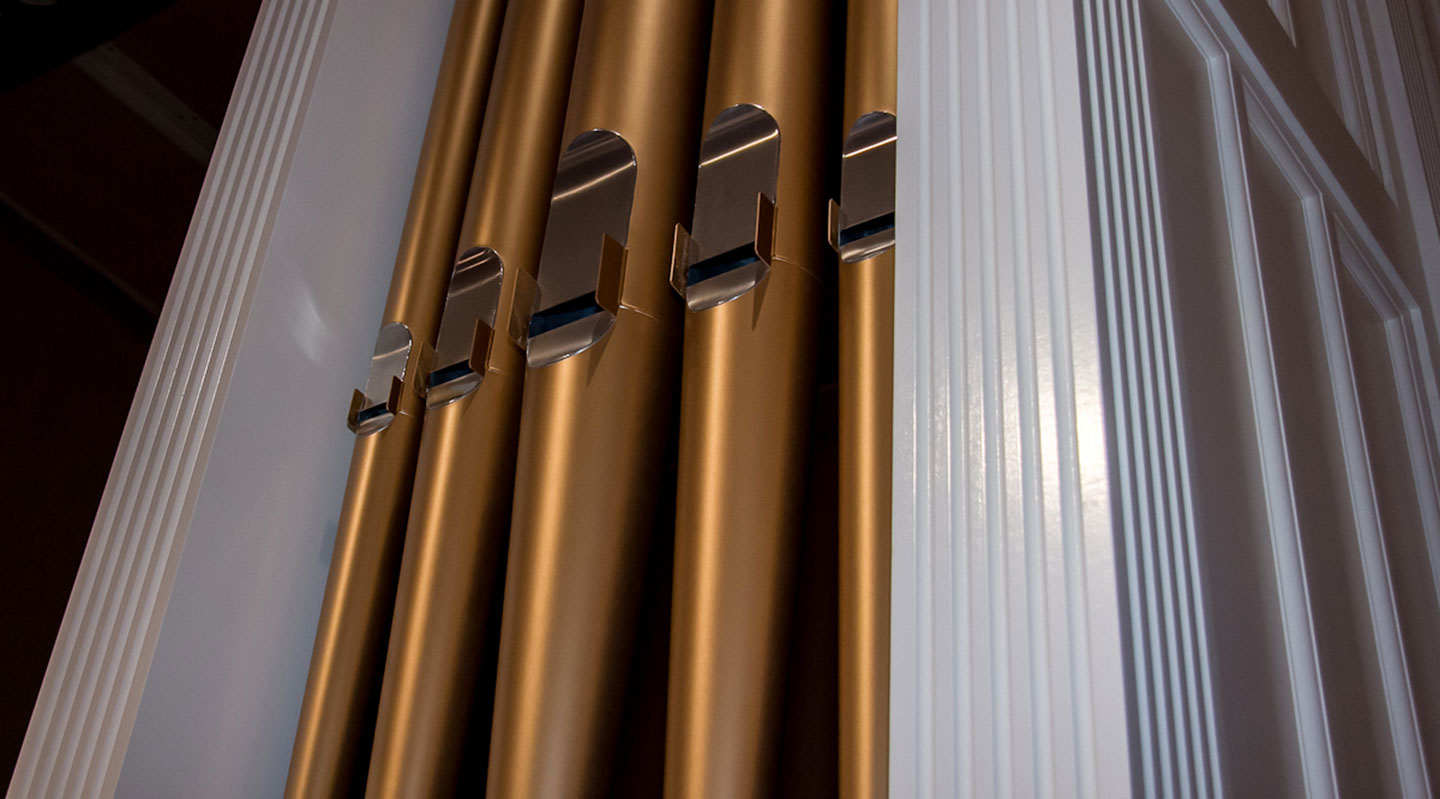Relocating Older Instruments
Within the last few years PJM & Assoc. has been involved with the relocation of instruments where the cost of a totally new pipe organ would have been prohibitive. While we are fully capable of designing and constructing new pipe organs, we find that the recycling and reconditioning of worthy older instruments sometimes permits a client church with limited funds, to obtain a pipe organ instead of an electronic substitute.
We often encounter many false misconceptions from prospective clients about the King of Instruments. When considering the purchase of an instrument, a pipe organ is often dismissed because it is believed to be too expensive; people also sometimes think that a pipe organ will require excessive space. We have found this especially in recent times when shrinking church membership and budgets do not allow for quality music.
Church services offer for many people the only opportunity to experience live music from a naturally produced sound element. Churches which think they cannot afford a pipe organ, but which want an instrument of lasting quality and practical affordability, may wish to consider a recycled pipe organ.

One of the many services offered by PJM & Assoc. Inc. is a brokerage and consultation service for the relocation of used pipe organs. These “orphaned” pipe organs become available each year as a result of the installation of new instruments, building renovations, church mergers and closings. A good pipe organ, properly maintained, will last for generations. Hundreds of organs built during the last century are still serving congregations faithfully across the United States.
Although the initial expense of an electronic substitute is often less than that of a pipe organ, the relatively short life span (15-20 years) makes the pipe organ a wiser long-term investment and a better example of prudent stewardship. The Philadelphia area is literally a vast resource for quality pipe organs looking for new homes. In addition to our local listing of instruments, we are a representative for the Organ Clearing House, an established organization that has enabled over 3000 instruments over the last 40 years to find new homes in the U.S. and abroad. Our connection with OCH enables us to network with a nationwide listing of over 400 electric and mechanical action instruments of all sizes, configurations, styles, and voicing qualities. In addition many of these instruments contain exquisite casework and façade construction.
A relocated organ can represent a substantial saving over the cost of a new instrument depending on the condition of its mechanical systems. Since most of the important materials (pipes, chests, console, framing, etc.) are constructed, the primary expense of many relocation projects is the labor involved in dismantling, packing, and moving the organ, renovating the mechanical and/or tonal design if needed, and adapt it to its new home. Should the organ be in good existing mechanical condition, an even greater savings can be realized. It often happens that an instrument can be acquired, restored and installed for often less than a comparable new pipe organ.
Another reason for purchasing an existing organ is the instrument’s historic value. Many organs available for relocation were built by great American Organbuilders such as Hook & Hastings, Roosevelt, C.S. Haskel, Austin, Casavant, Skinner, Kimball, Moller and others. These pipe organs are available in a wide variety of styles and sizes. Styles range from classic Victorian examples to recently constructed instruments. Sizes range from small one manual organs to larger two and three manual instruments. Kinds of action range from mechanical, or tracker, to electro-pneumatic and electro-mechanical.
Historical information is readily available on these builders often through our own information collected locally, or through that of the Organ Historical Society. We can often provide historical background information on a specific instrument being relocated to establish a pedigree. This information might include the company or people that built the organ, when and where it was built and previous installations.
Patrick J. Murphy & Assoc. Inc. is an established firm with a large, modern facility and experienced personnel. We take great precautions to ensure that the organ is professionally removed and carefully packed using techniques and materials conducive to safe moving and reinstallation.
Our skilled professionals can refurbish all operational parts of the organ, (windchests, reservoirs and selective console mechanisms), electrical systems (including new solid state switching and combination action systems, MIDI where applicable), refurbishing or replacement of delicate mechanical action mechanisms, and refinishing of wood parts. All of these items can be accomplished without major changes in design but we have the experience to refurbish the instrument and modify the design mechanically and tonally if needed to make it perfectly suited to the individual needs of the client now and for the future.
When planing a new instrument, our experience with the past often provides us with valuable insight for a new construction. However should the cost of a new pipe organ be prohibitive, other options should be considered before resorting to an electronic substitute.
A pipe organ doesn’t have to be “an impossible dream!” A relocated and refurbished pipe organ can be an affordable and practical alternative.
« Back to Other Articles
